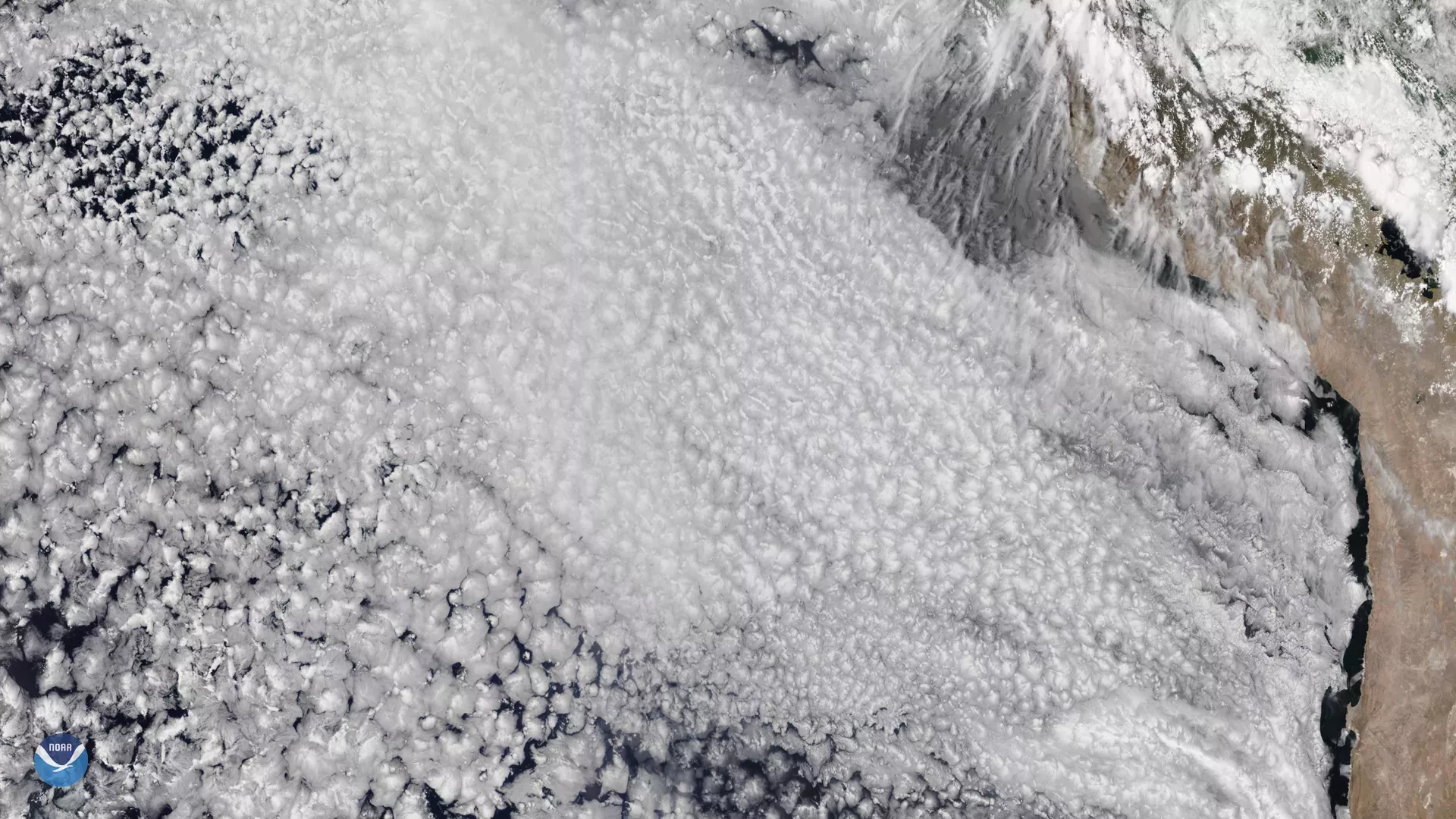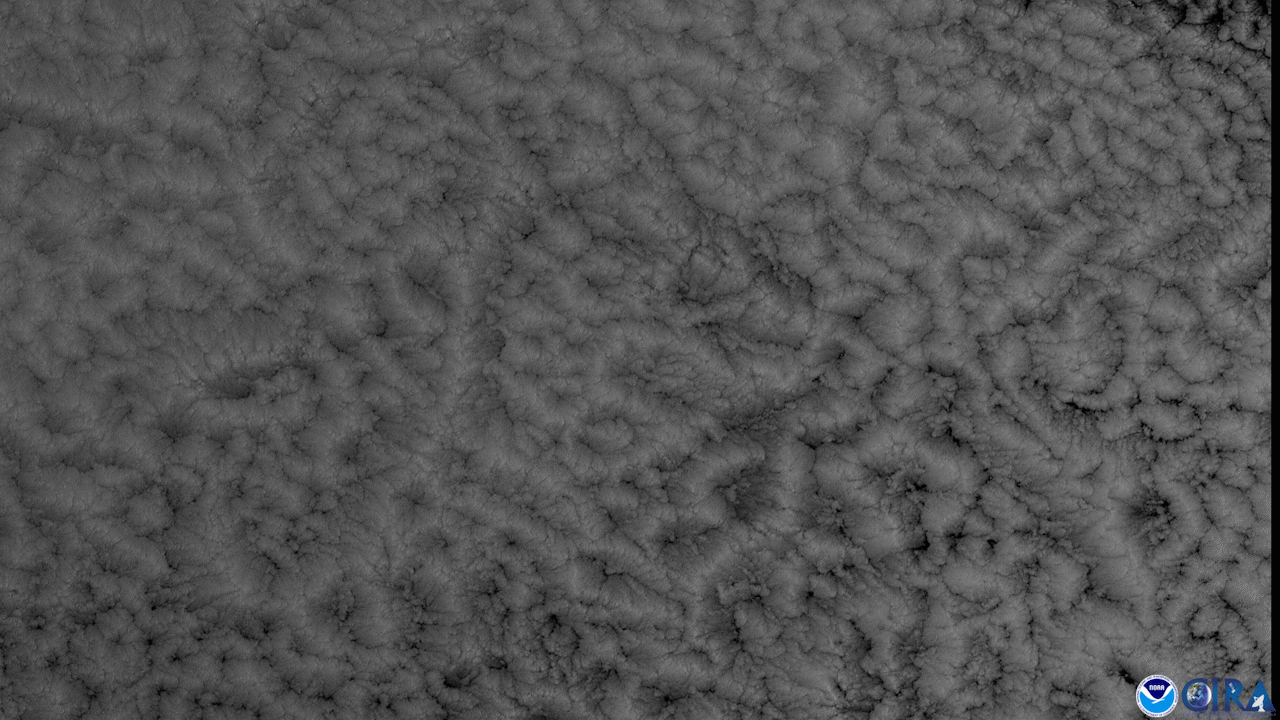Marine stratocumulus clouds (MSCs) typically lie at low-altitudes below 6,000 feet, covering about 20 percent of the low-latitude oceans, or 6.5 percent of the Earth’s surface.
MSCs usually form over water and have either closed- or open-cell forms—the difference has to do with their cloud cover. Closed-cell MSCs cover nearly 100 percent of the underlying Earth’s surface and reflect a large portion of solar radiation. Open-cell MSCs, on the other hand, have broken cloud structures that surround areas of clear sky, which do not block much solar radiation.

The image above contains both forms of these clouds. Can you tell which ones are which?
Interestingly, changes in the local air quality have been found to affect these clouds. In fact, a study published in the Journal of Geophysical Research found that emissions, such as those from ships, can cause the transition from open- to closed-cell MSCs over large areas. Additionally, another study from JGR Atmospheres found that dust, smoke, pollutants, and other aerosols from continents can cause the same effect.
See additional examples below.

